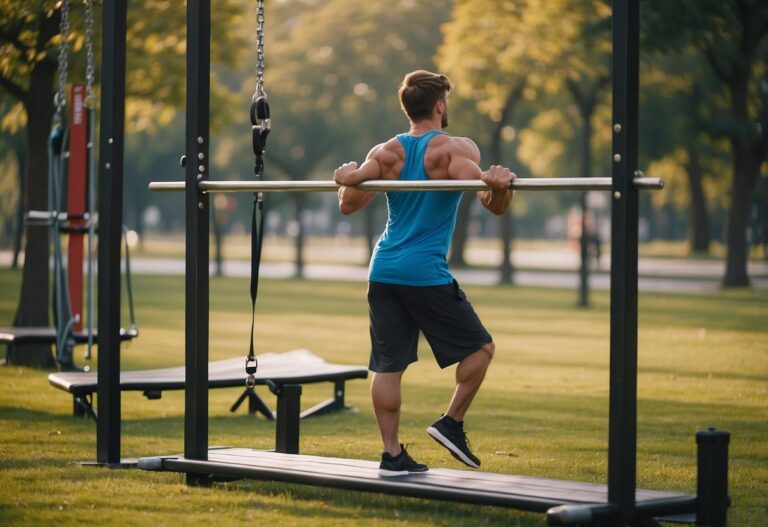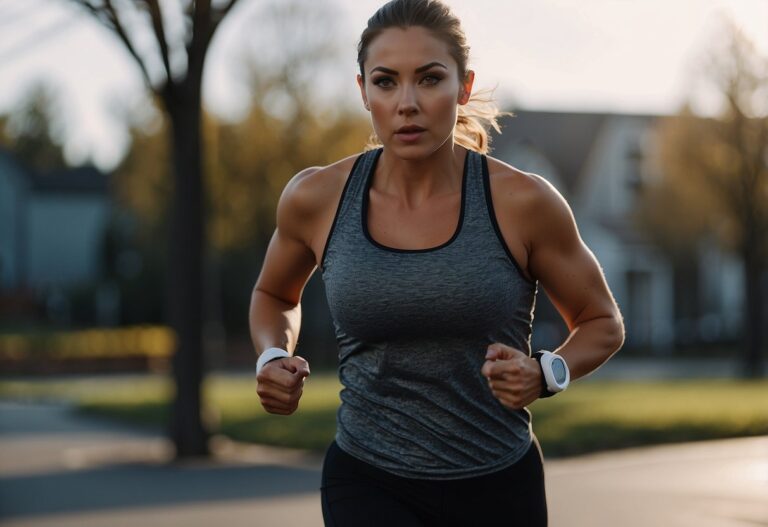Cycling is a wonderful way to stay fit and enjoy the outdoors, but knowing how to improve your performance can sometimes be a challenge. Whether you’re a beginner or an experienced rider, having the right workout tips can make all the difference in your cycling journey. From boosting your stamina to perfecting your technique, there’s a lot to discover that can help you become a better cyclist.

Embracing a mix of different training methods can keep your workouts exciting and effective. Exploring various ways to enhance your cycling fitness will ensure that you stay motivated and continue to see progress. By following well-structured and thoughtful advice, you’ll find you can enjoy your rides even more while reaching new fitness goals.
Warm up with light pedalling
Warming up before a cycling workout is key to getting the most out of your session. A simple way to start is by light pedalling.
Spend about five minutes gently spinning at a low resistance. This gets your blood flowing and prepares your muscles for more intense exercises.
As you pedal lightly, aim to keep your effort level around 2/10. This should feel easy and relaxed. Avoid pushing too hard at this stage; it’s all about getting your body ready.
Don’t skip this step. A proper warm-up can help prevent injuries and improve your performance in the long run.
Interval training for endurance
Interval training can greatly improve your endurance. By alternating between high and low-intensity efforts, you stress your body in a beneficial way. For example, try doing a 30-30 workout, where you pedal hard for 30 seconds and recover at a slow pace for the next 30 seconds.
Start simple if you’re new to this. An 8-minute interval workout could be ideal where you go hard for 8 minutes and then take a break.
If you do it right, you’ll see your average power output increase. For example, if your starting FTP (Functional Threshold Power) is 250 watts, you might average 70-80% of that in a race, or around 200 watts. With effective interval training, you could raise your FTP to 275 watts and your race power to around 220 watts.
Hill repeats for strength
Hill repeats are a fantastic way to build strength in your legs. By repeatedly cycling up a hill, you force your muscles to work harder, which helps to build power and endurance.
Find a hill with a challenging gradient. It should be steep enough to make you work, but not so steep that you can’t maintain good form.
Aim to do hill repeats once a week. Start with shorter sessions and gradually increase the duration. For example, you might start with 30-second efforts and build up to 2-minute climbs.
Make sure to warm up properly before you start. A good 20-minute warm-up will get your muscles ready and reduce the risk of injury.
Track your progress
Tracking your cycling progress is key to improving your performance. Start by using fitness tracking apps like Strava. These apps allow you to log your rides, monitor your speed, and compare your results over time.
Consider keeping a training log. A simple notebook can do the trick. Record the date, type of workout, and any observations about how you felt during and after your ride.
Digital tools offer more detailed insights. Apps like the ones discussed in this article provide advanced metrics like cadence and heart rate.
Using these methods, you can adjust your training plans based on your progress. Whether you’re aiming for a personal best or just want to stay fit, tracking your progress helps you stay on the right track.
Incorporate rest days
Incorporating rest days into your cycling routine is crucial for your progress. Rest allows your muscles to repair and grow, reducing the risk of injury. Did you know that even elite cyclists need to take breaks to stay in peak condition?
On rest days, you can engage in active recovery. This might include a gentle walk, some light yoga, or a relaxed swim. Activities like these keep your body moving but don’t strain your muscles.
You could also consider trying a different sport for fun, such as hiking or playing tennis. Mixing up your routine can keep things interesting and help you avoid burnout. For more detailed tips, check out this guide on how to use rest weeks in your cycling training.
Fuel Your Body Properly
Fueling your body right is key for peak cycling performance. Think about how cars need petrol; similarly, you need energy from food.
For shorter rides of 1.5-3 hours, aim for 20-60 grams of carbohydrates per hour. Drinking a sports drink can help, especially if your ride is high intensity.
Before your ride, have a balanced meal. Include carbs, protein, and fats in your breakfast. For instance, porridge with fruits and nuts is a great option.
During long rides, snack regularly. Energy bars, bananas, and gels are quick and effective. Staying hydrated is also crucial. Carry water or an electrolyte drink for hydration support.
Use Proper Cycling Gear
Using the right cycling gear can make a huge difference in your ride.
First, make sure your bike is properly adjusted to fit your body. This includes the height of the saddle and the position of the handlebars.
When it comes to clothing, wear moisture-wicking fabrics to keep yourself dry and comfortable. Padded shorts can also make long rides more pleasant.
Cycling shoes that clip into your pedals can improve your efficiency and power on the bike. They help you use your leg muscles more effectively.
A good helmet is essential for safety. Make sure it fits snugly and is properly secured.
Lastly, consider using bike gloves to improve your grip and protect your hands.
Maintain Good Posture
Good posture is key for effective cycling. When you’re on the bike, keep a neutral spine. This means your back should be flat or have a slight natural curve.
Pay attention to your shoulders. They should be relaxed and down to prevent tension. Don’t hunch or round them forward.
Your knees need to track well with a slight external rotation of the legs and feet. This helps keep them aligned and reduces strain.
Engaging your core muscles is essential. A strong core keeps your spine straight and helps maintain better posture.
Remember, a proper posture not only improves comfort but also boosts cycling performance. For more detailed techniques, check out these tips.
Cool down with stretching
After a bike ride, it’s crucial to take some time to stretch. This helps in easing muscle tension and preventing stiffness.
Start by stretching your calves. Place one foot on the edge of a step and gently push your heel down. Hold for about 45 seconds and switch sides.
Next, focus on your thighs. Stand on one leg and pull the other foot towards your buttocks, holding it for 30 seconds.
Don’t forget your lower back. Lying face up with knees bent, lift your hips while keeping your core engaged. Hold this position for a short while and slowly lower back down.
Regular stretching will aid in quicker recovery and keep you feeling great. For more detailed stretches, visit The 10 Best Cool Down Stretches For Cyclists.
Cadence Drills
Cadence drills are essential for improving your cycling efficiency. They help you pedal more smoothly and boost your overall performance.
Start with simple high-cadence intervals. Try pedalling at a fast pace for one minute, then return to a normal speed. Repeat this a few times during your ride.
Another great exercise is MT intervals. Do 4×5-minute intervals with recovery periods equal to your effort time.
Incorporate fluidity and coordination. Focus on making your pedal strokes smooth and even. This will help you ride more efficiently over time. Practice makes perfect!
Understanding Cycling Workouts
Cycling workouts come in various forms, each designed to target different aspects of fitness and skill. Regular cycling not only boosts your physical health but also offers a host of other advantages.
Types of Cycling Workouts
Cycling workouts can be broadly categorised into several types. One common type is the endurance ride, which helps build cardiovascular fitness. These rides are typically long and steady, often spanning several hours.
Interval training is another popular method. This involves alternating between high-intensity bursts and periods of lower intensity. It’s great for improving speed and power.
Hill repeats focus on climbing, targeting your leg strength and stamina. By repeatedly cycling up a steep incline, you can significantly improve your performance on hilly routes.
Finally, recovery rides are low-intensity sessions meant to help your muscles recover while keeping you active. These can be especially useful after a tough workout, preventing burnout and injury.
Benefits of Regular Cycling
Regular cycling offers numerous health benefits. Firstly, it significantly improves your cardiovascular health, reducing the risk of heart disease. By incorporating cycling into your routine, you can enhance your lung capacity and overall endurance.
Cycling also aids in weight management. It can burn a significant number of calories, helping you maintain a healthy weight. For example, a moderate pace can burn around 300 calories an hour, depending on your weight and intensity.
Another major benefit is its impact on mental well-being. Regular cycling can reduce stress, anxiety, and depression. The rhythmic motion of pedalling, combined with the outdoors, can have a calming effect on your mind.
Additionally, biking helps strengthen and tone your muscles, particularly in your legs and lower body. It’s also a low-impact activity, which makes it suitable for people of all ages and fitness levels.
Incorporating a variety of cycling workouts into your routine can keep things interesting and continuously challenge your body in new ways.
Optimising Your Cycling Routine
To make the most out of your cycling routine, it’s essential to have clear and achievable goals, as well as a consistent method for tracking your progress. By focusing on these areas, you can ensure steady improvement and greater satisfaction in your cycling journey.
Setting Realistic Goals
Setting realistic goals is crucial for maintaining motivation and seeing progress. Instead of aiming for an overly ambitious target like cycling 100 miles in a week when you’ve just started, break it down into smaller, achievable milestones. This could mean starting with 20 miles and gradually increasing your distance over time.
Think about what you want to achieve. Do you want to increase your speed, enhance endurance, or simply enjoy the ride? Each goal requires a different approach. For instance, if your goal is to boost speed, include interval training sessions like 10×30-second maximal sprints with rest in between (8 x 4 minutes at 90% effort). For endurance, try longer rides at a steady pace.
Recording your progress can also help you stay on track. Use a journal or digital app to note down each ride, how you felt, and any improvements. This allows you to see patterns and make necessary adjustments to your routine.
Tracking Your Progress
Tracking your progress is essential to see how far you’ve come and to identify areas for improvement. Use tools like cycling computers, GPS watches, or smartphone apps to record metrics like distance, speed, and heart rate. Monitoring these metrics regularly can provide valuable insights into your performance.
Setting benchmarks can be an effective way to gauge your progress. For example, test your performance on the same hill climb every couple of weeks to see if you can ride it faster or with less effort. This can be particularly satisfying when you notice you’re shaving seconds off your previous times.
Another useful method is to track how you feel during and after rides. This subjective data is just as important as the numbers. If you consistently feel less fatigued or recover quicker, it’s a sign that your fitness is improving. Plus, short 30-minute cycling workouts can also be very effective if you notice consistent progress.
With these steps, you can effectively optimise your cycling routine for continuous improvement and satisfaction.
Nutrition and Recovery
Proper nutrition and effective recovery techniques are essential for getting the most out of your cycling workouts. Paying attention to what you eat before and after your ride can significantly impact your performance and recovery.
Pre-Workout Nutrition
Eating the right foods before cycling prepares your body for the effort ahead. Focus on getting enough carbohydrates to fuel your muscles. Options such as whole grains, fruits, and vegetables are excellent choices. For example, a breakfast of oatmeal topped with banana or a smoothie with berries and spinach can give you a good start.
It’s important to eat around 2-3 hours before your ride. This allows time for digestion and helps avoid stomach issues. Hydration is also crucial. Make sure to drink water throughout the day and consider having an electrolyte drink if you are planning a long ride.
Think about portion sizes. Eating too much or too little can both be problematic. A balanced meal that isn’t too heavy will give you energy without making you feel sluggish. Experiment with different foods to see what works best for you.
Post-Workout Recovery
Post-workout recovery involves both nutrition and rest. After a hard ride, your body needs protein and carbohydrates to repair muscles and replenish glycogen stores. A good recovery meal might include a lean protein like chicken or fish, paired with a complex carbohydrate like sweet potato or brown rice.
A recovery drink with a 4:1 carb-to-protein ratio can be particularly effective right after cycling. This helps speed up muscle recovery. Equally, foods such as yoghurt, nuts, and fruits can also be beneficial.
Sleep is another critical factor. Ensure you get enough rest to allow your muscles to recover. Aim for at least 7-8 hours of sleep a night. If you can, try taking short naps, especially on high-intensity training days.
Incorporating stretching and low-intensity activities like walking or yoga can help ease muscle soreness and improve flexibility. Paying attention to both what you eat and how you rest can make a big difference in your cycling performance. For more detailed insights on recovery, visit here.







